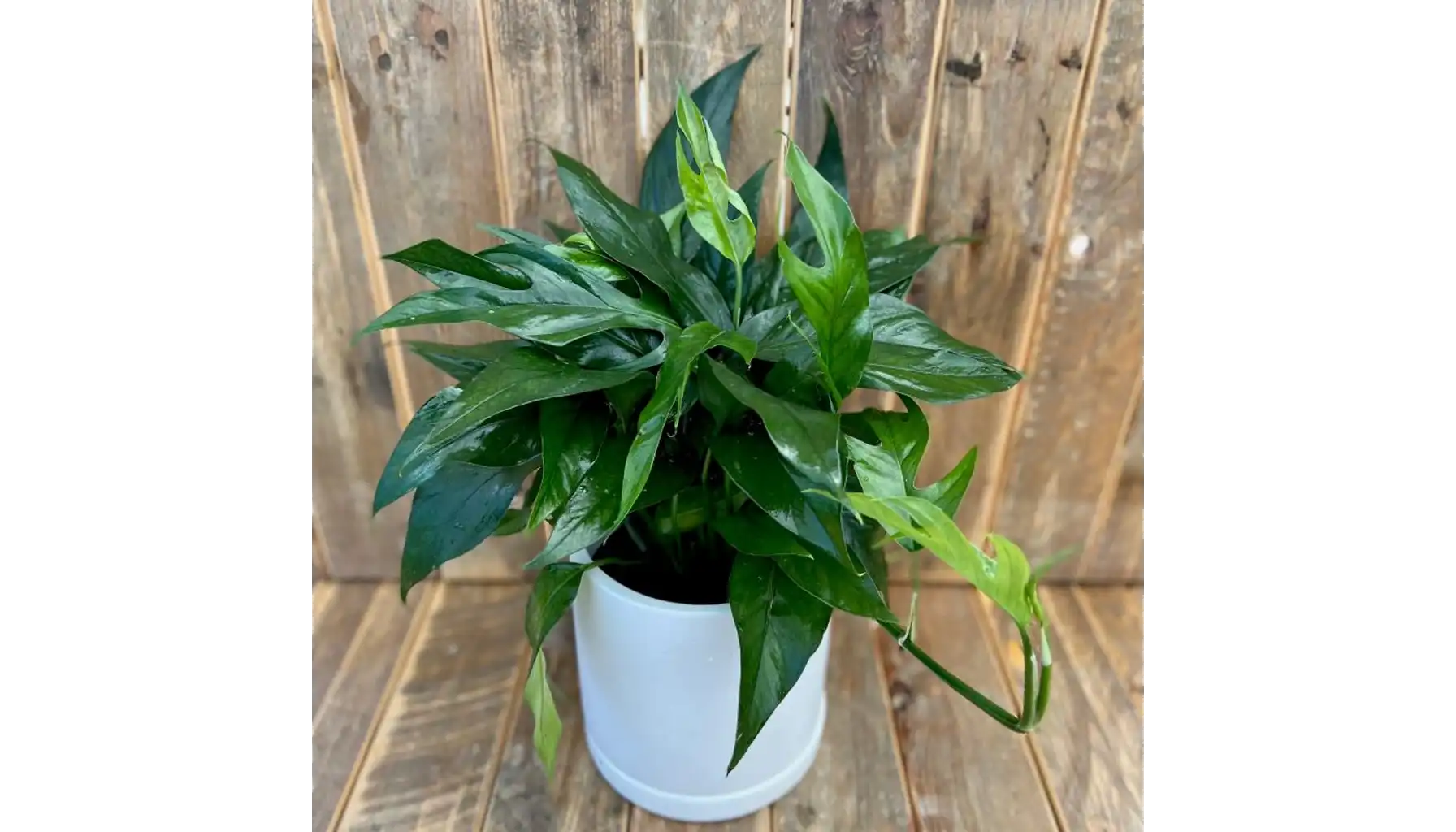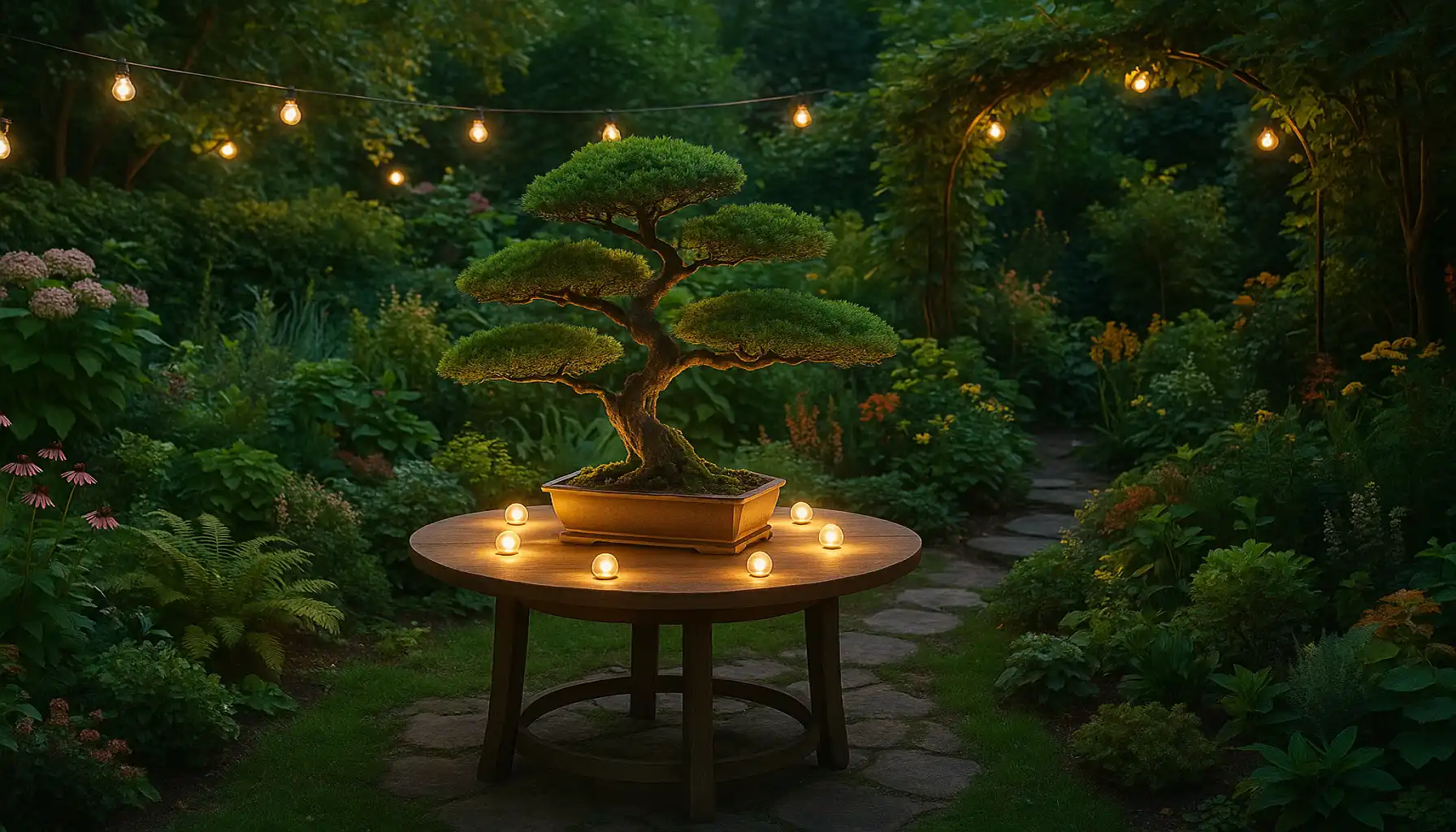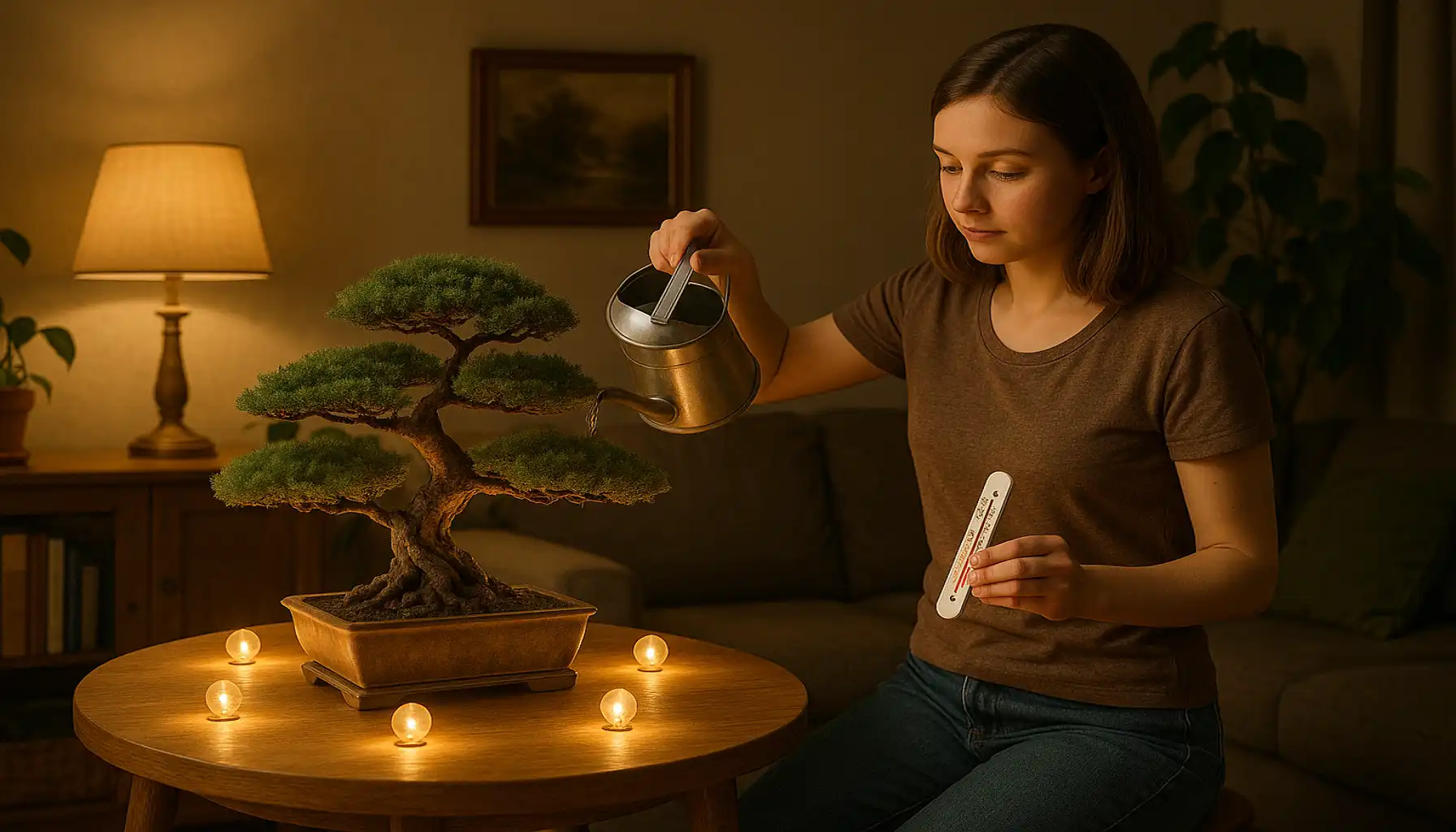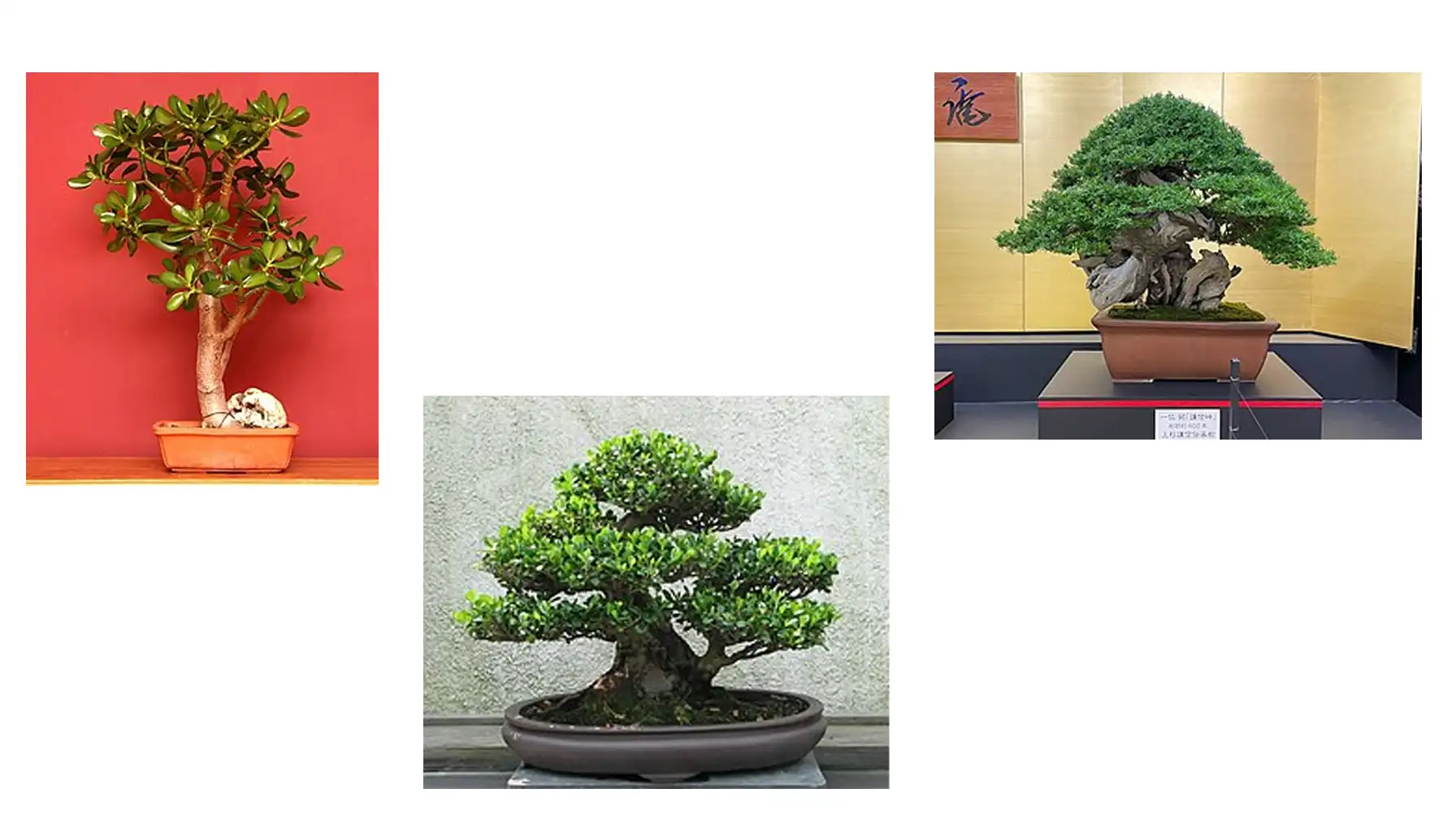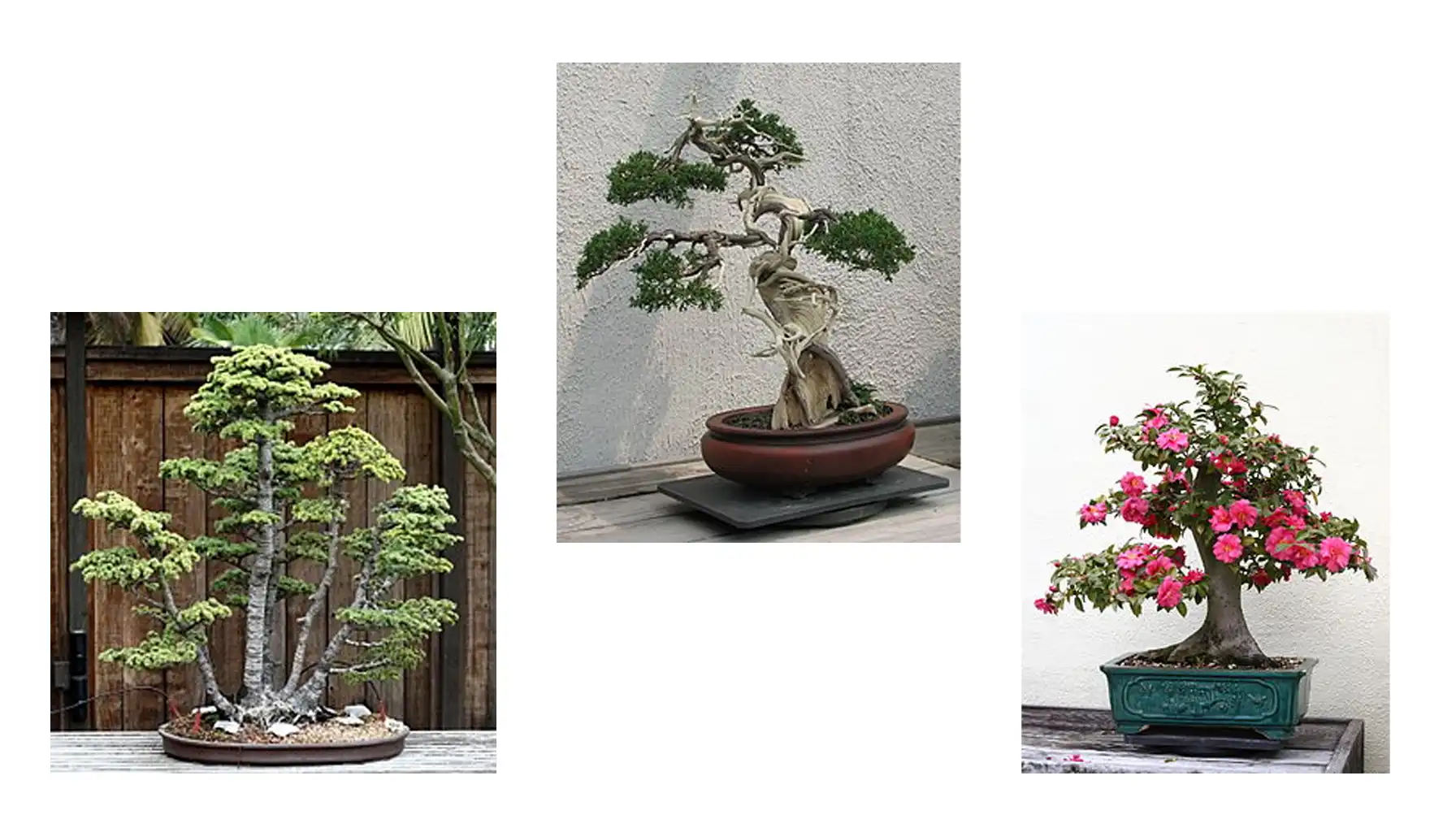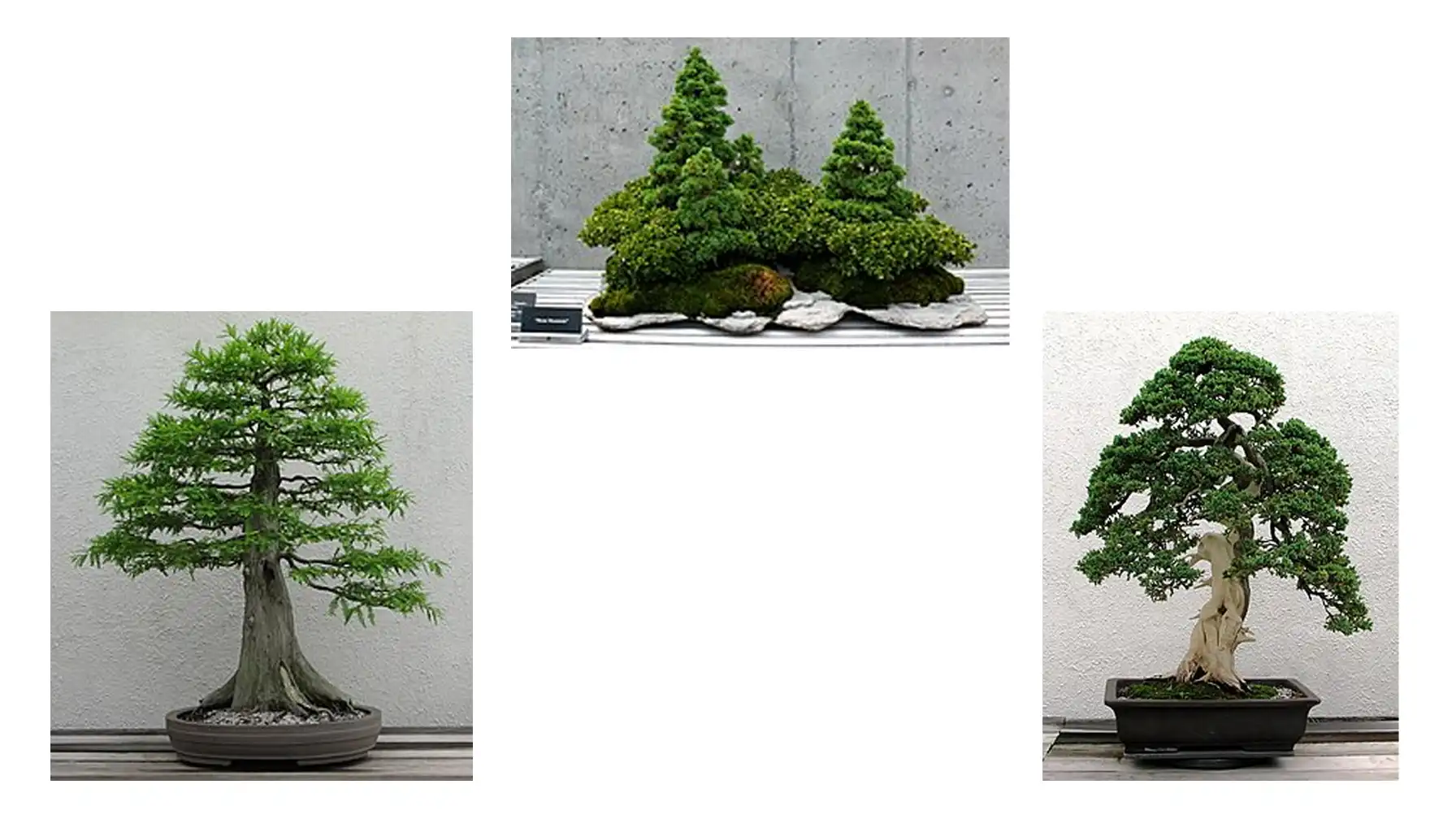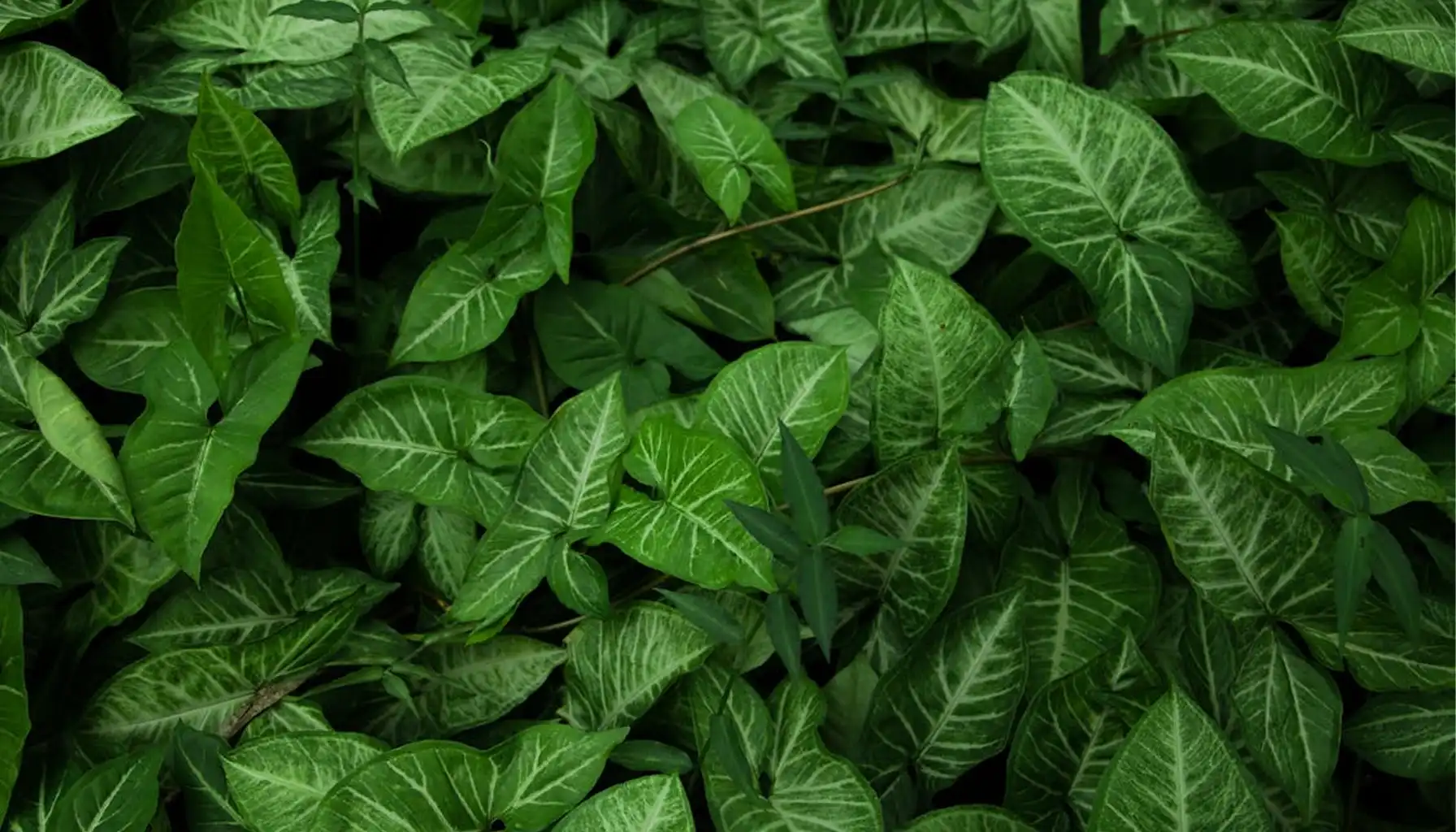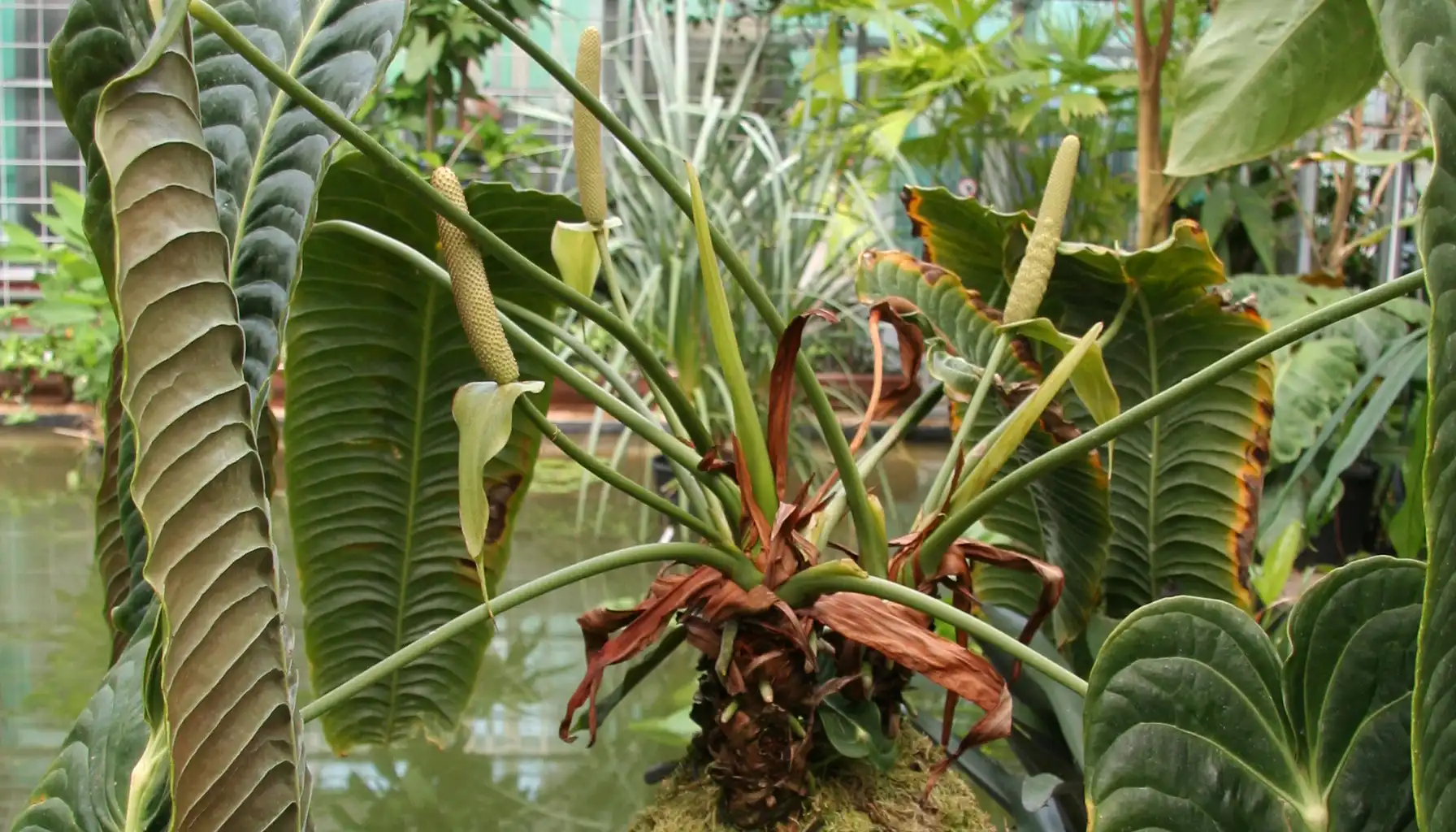It's not just potted trees, it's a whole philosophy frozen in miniature.
For how many centuries people have been admiring them, putting their soul into the formation of these living sculptures! Every bend of the branch, every root tells a story, and this is the real bonsai tree meaning.
However, there are too many scammers. It's a good thing that technology doesn't stand still. Artificial intelligence has taken up bonsai now! Imagine the plant finder of the future, which is 96% accurate and able to distinguish a real century-old relic from a skillful, but still fake one.
Bonsai Meaning
If you Google bonsai meaning, you will be told that it is "grown in a tray." But this is just the tip of the iceberg! It is the art of growing miniature trees in containers to resemble mature, large trees.
Historically, bonsai has its roots in China, and from there it got to Japan, where it reached its heyday. Imagine this: for centuries, people have been honing their skills, passing secrets from generation to generation. It's not just bonsai tree drawing for you – it's a living organism!
A symbol of what? | Bonsai is about patience, about the ability to see beauty in small things, about harmony. It's like meditation, only with scissors and wire! Each tree is a unique work of art, a reflection of the master's soul. Someone even says that I have bonsai trees for sale, but we have not yet decided to part with our charges, we have been caring for them for years. |
How long do they live? | The oldest bonsai tree may be older than many of us! These trees are truly long–lived if they are taken care of. And that's another lesson from bonsai: It takes time and hard work to make something truly valuable. |
Bonsai Tree Care
Basic | The main thing is lighting, watering, pruning, and fertilizing. Watering should be regular, but not excessive. The light needs to be bright, but diffused (if it is an indoor bonsai tree). Pruning is an art, you need to know how and when to trim branches to form a beautiful crown. Well, top dressing is like vitamins for a tree, helping it grow and develop. |
Soil and pots | Soil should be well-drained and nutritious. Ordinary garden land will not do! It is better to use a special mixture consisting of sand, clay and organic substances. Bonsai soil is the foundation of the basics! Pots also play an important role. They should be shallow and wide so that the roots can develop well. They should also be beautiful and in harmony with the tree. Bonsai pots are not just containers, they are part of a composition.
|
Bonsai Tree Kit | If you are just starting your journey into the bonsai world, then it is worth purchasing the bonsai tree kit. It usually has everything you need: a pot, soil, fertilizers, pruning tools, and instructions. Of course, you can buy everything separately, but the starter kit is convenient and saves time. |
Indoor and outdoor | For indoor, you need to create certain conditions: temperature, humidity, lighting. Most indoor bonsai prefer temperatures of 18-24 degrees, high humidity, and bright, diffused light. If you take bonsai outdoors, then you need to protect it from direct sunlight, strong winds and frosts. By the way, bonsai sparkling water is certainly not needed for irrigation, but here's a good filter for the water you use to water your bonsai.
|
Types of Bonsai Trees
When you're looking for information about types of bonsai trees, you'll come across a bunch of things. But there are several types that are considered classics or just well suited for certain purposes. Let's look at them.
Ficus Bonsai
Features | The most common type, especially for beginners. Ficuses are tolerant of care errors, grow well indoors, and like bright but diffused light. Many species of ficus have aerial roots that can be decorated in an interesting way. |
Care | Watering as the topsoil dries, regular fertilizing during the growth period, pruning to form the crown. |
Chinese Elm Bonsai
Features | It is characterized by rapid growth and unpretentiousness. It is easy to shape, responds well to pruning, and forms dense and delicate foliage. |
Care | Regular watering and fertilizing during the growth period, pruning to maintain shape. He is not afraid of transfers. |
Japanese Maple Bonsai
Features | A very popular species due to its beauty, especially in autumn when the leaves change color. It is demanding of the conditions of detention, needs protection from direct sunlight and strong wind. |
Care | Regular watering, maintaining high humidity, fertilizing with special fertilizers for maples, protection from pests. |
Jade Bonsai
Features | Succulent, symbolizing luck and wealth. It does not require frequent watering, and grows well in bright light. |
Care | Moderate watering, good drainage, fertilizing with fertilizers for succulents. |
Wisteria Bonsai
Features | A very beautiful flowering plant. Flowering depends on proper pruning. |
Care | Regular watering, fertilizing with special fertilizers for flowering plants, pruning after flowering. |
Cherry Blossom Bonsai
Features | A symbol of spring and renewal. It requires good lighting and cool wintering conditions to stimulate flowering. |
Care | Regular watering, fertilizing, pest control, pruning after flowering. |
Weeping Willow Bonsai
Features | Creates the effect of falling branches. It likes moisture and plenty of space. |
Care | Abundant watering, regular fertilizing, pruning to form the crown. |
Juniper Bonsai Tree
Features | One of the most popular coniferous species for bonsai. It is unpretentious and easy to shape. |
Care | Regular watering, fertilizing with fertilizers for coniferous plants, pruning to maintain shape. |
Azalea Bonsai
Features | A profusely blooming plant with bright flowers. It requires acidic soil and special care during flowering. |
Care | Watering with soft water, fertilizing with fertilizers for azaleas, maintaining high humidity. |
AI Against Fakes
How does it work?
Special algorithms have been developed that analyze bonsai photos and identify signs of forgery.
They look at the structure of the bark, the age of the wood, the shape of the branches – everything that an experienced craftsman sees "by eye", but now it is done by a machine, and with incredible speed and accuracy.
Imagine A Plant Identifier App That Knows Its Greens – it's just from this opera, but adapted for bonsai.
You enter a photo, and it immediately gives you a verdict.
AI Plant Finder App
Plant identification apps like AI Plant Finder are a breakthrough!
They don't just help you figure out what kind of plant you're looking at, they can also spot signs of disease, pests, and even give you tips on how to care for it!
An AI Plant Finder could tell you if your plant is sick, has bugs, or isn't doing well, and then help you figure out how to fix it.
You can get personalized care advice, reminders to water, and expert tips for every plant you own.
We think AI is going to be a really important part of the bonsai world down the line. It will help customers to be confident in the authenticity of their purchases, as well as protect the work of real craftsmen and preserve this unique art for future generations.
And who knows, maybe soon there will be AI that will help us create new bonsai masterpieces, taking into account all the nuances and features of each tree.
Maybe he can even tell me how best to place bonsai rock near my tree so that the composition is perfect!
AI Plant Finder Related Posts:
